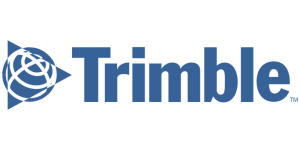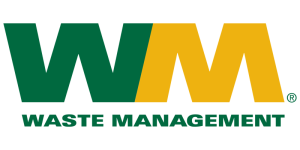How important is it to maintain an XML sitemap for SEO indexation in 2024?
As we delve deeper into the digital age, the landscape of Search Engine Optimization (SEO) continues to evolve at a breakneck pace. With the arrival of 2024, website owners and marketers are constantly seeking innovative strategies to ensure their online presence is not just visible but dominant. In this quest for digital supremacy, the importance of maintaining an XML sitemap for SEO indexation cannot be overstated. It’s a tool that often flies under the radar but is critical for ensuring search engines can crawl and index a website efficiently. With years of experience in the digital marketing realm, JEMSU has consistently emphasized the significance of XML sitemaps as part of a comprehensive SEO strategy.
JEMSU understands that in the competitive online space, neglecting the technical aspects of SEO can be detrimental to a website’s performance. An XML sitemap acts as a roadmap for search engines, guiding them through the structure of a website, and ensuring that all valuable content is discovered and indexed. In a time where search algorithms are becoming increasingly sophisticated, the clarity and organization provided by an XML sitemap are more crucial than ever. As we look towards the future of SEO in 2024, JEMSU’s insights reveal that an XML sitemap isn’t just a best practice—it’s a vital component for staying relevant and visible in search engine results.
In this article, we will explore the multifaceted role of XML sitemaps in SEO indexation and why businesses should prioritize its maintenance. From enhancing search engine crawlability to supporting the swift inclusion of new pages – the benefits are clear. With a fine-tuned XML sitemap, JEMSU helps businesses of all sizes navigate the complexities of SEO, ensuring that they are not only indexed but also positioned for maximum search visibility in an increasingly crowded digital ecosystem.
Table of Contents
1. Impact of XML Sitemaps on Search Engine Crawling and Indexing
2. XML Sitemaps and Site Structure Visibility
3. The Relationship Between XML Sitemaps and Page Ranking
4. Best Practices for XML Sitemap Creation and Maintenance
5. XML Sitemaps vs. RSS/Atom Feeds for SEO in 2024
6. Integration of XML Sitemaps with Emerging Web Technologies and Search Engine Algorithms
7. FAQs
Instant SEO Checker + Score & Report
Enter the URL of any landing page to see how optimized it is for one keyword or phrase...
Impact of XML Sitemaps on Search Engine Crawling and Indexing
Maintaining an XML sitemap is a fundamental aspect of SEO indexation, especially as we move into the year 2024. XML sitemaps serve as a roadmap for search engines, guiding them through the content on your website, and ensuring that they are aware of every page you deem important. At JEMSU, we often liken an XML sitemap to a city map used by tourists; just as the map highlights landmarks and routes for visitors, the XML sitemap illuminates the path for search engines to effectively crawl and index a website’s pages.
The importance of XML sitemaps in the realm of search engine crawling and indexing cannot be overstated. A well-structured XML sitemap can expedite the indexing process by alerting search engines to new or updated content immediately, rather than leaving these updates to be discovered organically over time. This is particularly crucial for larger websites or those with a significant volume of content, where new pages might otherwise go unnoticed by search engines for an extended period.
JEMSU harnesses the power of XML sitemaps by ensuring that they are updated regularly to reflect the most current state of a website. This includes the addition of new pages, the removal of obsolete ones, and the modification of existing content. Statistics indicate that websites with regularly updated XML sitemaps tend to be crawled more frequently, which can lead to quicker visibility in search engine results pages (SERPs).
To illustrate, imagine a new online store that has added an extensive range of products to its catalog. Without an updated XML sitemap, search engines might take weeks or even months to discover and index these new product pages. By providing a current XML sitemap, JEMSU helps search engines quickly find and index these pages, allowing the store to appear in relevant search queries much sooner.
Furthermore, an XML sitemap can be particularly beneficial for websites with deep or complex architecture. Pages that are not well-linked internally or are several clicks away from the homepage might be overlooked by search engines during a routine crawl. However, by including these pages in an XML sitemap, JEMSU ensures that they are acknowledged and indexed, thereby improving the overall visibility of the site’s content.
In summary, as we look ahead to 2024, the significance of XML sitemaps in supporting the crawling and indexing efforts of search engines remains as critical as ever. By strategically utilizing XML sitemaps, JEMSU provides its clients with a competitive edge, ensuring that their websites are fully indexed and primed to rank successfully in an increasingly complex digital landscape.
Google Ads Success Example
The Challenge: The Challenge: Increase new dental patients with better Google Ads campaigns.
XML Sitemaps and Site Structure Visibility
XML sitemaps play a crucial role in the visibility of a site’s structure to search engines. At JEMSU, we understand that a well-structured XML sitemap is akin to a roadmap for search engines, guiding them through the various pages on a website. This roadmap is particularly important for larger websites that have numerous pages, which may not be discovered as quickly without a sitemap.
Consider a library without a catalog; it would be difficult for visitors to find the book they’re looking for amidst the vast collection. Similarly, an XML sitemap helps search engines like Google and Bing efficiently find and index all the pages on a website, even those that might not be linked from anywhere else on the site. It’s like providing search engines with a detailed index of a book, making every chapter easily accessible.
In 2024, maintaining an XML sitemap is still very important for SEO indexation because it directly impacts how search engines understand the structure and hierarchy of a website. For instance, a sitemap can indicate which pages the site owner considers most important by using priority tags, or how often the content is updated through the use of change frequency tags.
JEMSU leverages the power of XML sitemaps to enhance site structure visibility for its clients. By doing so, we ensure that every page, especially new and updated content, stands a better chance of being noticed and indexed by search engines. This approach not only helps in keeping the site’s content in the search engine indexes but also supports newer pages in getting indexed more quickly.
To illustrate the effectiveness of XML sitemaps, consider a statistic from a study that showed websites with a sitemap submitted to Google Search Console have, on average, 1.84% more pages indexed compared to those without. While this might seem like a small percentage, for a website with thousands of pages, it can translate into a significant number of additional pages being indexed.
Furthermore, John Mueller of Google once quoted, “XML Sitemaps are a great way to tell search engines about new and updated content.” This statement underscores the importance of XML sitemaps and their influence on a site’s visibility to search engines.
In the context of SEO in 2024, JEMSU continues to emphasize the creation and maintenance of XML sitemaps as part of its comprehensive SEO strategy. By doing so, we ensure that our clients’ websites remain agile and visible in an ever-evolving digital landscape, where site structure and content visibility are paramount for search engine success.
The Relationship Between XML Sitemaps and Page Ranking
Maintaining an XML sitemap is a crucial aspect of SEO strategy, and at JEMSU, we understand its importance when it comes to the relationship between XML sitemaps and page ranking. While it’s commonly misunderstood that XML sitemaps directly influence page rankings, their real power lies in assisting search engines with the efficient discovery and indexing of pages.
Think of an XML sitemap as a roadmap for search engines. If a website is a sprawling metropolis, then the sitemap is the guide that highlights all the important landmarks (web pages) for the search engine ‘tourists’ to visit. Without this guide, search engines might miss out on newly added pages or updates, especially if internal linking isn’t robust. This can be particularly critical for large websites with hundreds or thousands of pages, or for websites that frequently add, remove, or update content.
JEMSU leverages the potential of XML sitemaps to ensure that search engines can crawl our clients’ websites more intelligently. For instance, a sitemap can provide valuable metadata about pages on a website, such as when a page was last updated or how often it changes. This information can help search engines prioritize which pages to crawl and index first, indirectly affecting how quickly content appears in search results and potentially its ranking.
Moreover, XML sitemaps can be especially beneficial for new websites or pages. Without a sitemap, a new site might remain invisible to search engines until discovered through external links. By submitting an XML sitemap to search engines, you can prompt them to crawl and index your new content sooner. As an analogy, it’s like sending out invitations to a grand opening – you’re directly informing interested parties (in this case, search engines) about your new establishment so they can come to visit right away.
It’s important to note that while XML sitemaps help with indexation, they are not a silver bullet for achieving high rankings. They work in tandem with other SEO best practices, such as optimizing content with relevant keywords, ensuring a mobile-friendly design, and obtaining high-quality backlinks. JEMSU emphasizes a holistic approach to SEO, where XML sitemaps are one piece of the larger puzzle.
In the constantly evolving world of SEO, JEMSU stays ahead of the curve by not only maintaining XML sitemaps but also by keeping track of the latest trends and algorithm changes. For example, with the rise of voice search and artificial intelligence, we integrate XML sitemaps with emerging web technologies to ensure that our clients’ websites are easily discoverable, regardless of how search technologies develop in the future.
By prioritizing the maintenance of XML sitemaps, JEMSU ensures that our clients’ websites are thoroughly indexed by search engines, setting the stage for better visibility and, ultimately, higher rankings in search results.
SEO Success Story
The Challenge: The Challenge: Design an SEO friendly website for a new pediatric dentist office. Increase new patient acquisitions via organic traffic and paid search traffic. Build customer & brand validation acquiring & marketing 5 star reviews.
Best Practices for XML Sitemap Creation and Maintenance
Maintaining an XML sitemap is crucial for SEO indexation, especially as we move into 2024. As a digital advertising agency, JEMSU understands the intricacies involved in ensuring that websites are easily discoverable and indexable by search engines. The creation and maintenance of an XML sitemap is a fundamental aspect that cannot be overlooked if one wishes to optimize their site’s visibility and searchability.
An XML sitemap acts as a roadmap for search engines, guiding them through the content on a website. This is particularly important for larger sites or those with a complex hierarchy, as it helps search engines locate pages that might not be easily found during a regular crawl. The development of a well-structured XML sitemap can greatly improve a website’s online presence. To ensure an XML sitemap serves its purpose effectively, there are several best practices that JEMSU recommends.
Firstly, it’s important to keep the XML sitemap up-to-date. Whenever new content is published or old content is removed, the sitemap should be refreshed to reflect these changes. This practice ensures that search engines are not crawling non-existent pages, which can negatively impact a site’s health and user experience. JEMSU often likens this to keeping a store layout updated for shoppers; just as customers can find products more easily with an accurate map, search engines can index content more efficiently with an up-to-date sitemap.
Another best practice involves prioritizing the most important content. Not all pages on a website are created equal, and the XML sitemap should reflect this by including a priority tag. This tag indicates to search engines the relative importance of pages on a site, helping to allocate crawl budget more effectively. For example, the homepage of a website and other high-level pages should typically be given a higher priority than deep-linked or less significant pages.
Including a ‘lastmod’ date for each URL listed in the sitemap can also be beneficial. This date shows when the content was last modified, giving search engines a clear signal that the page is updated and should be re-crawled. For instance, if JEMSU’s blog posts are regularly updated with new information, including the ‘lastmod’ date in the sitemap would signal to search engines that these pages are fresh and potentially more relevant to search queries.
Furthermore, sitemaps should not include every single page on a website. Pages that are duplicate, irrelevant, or contain sensitive information should be excluded. This is akin to a museum not including staff-only areas on the visitor map; it helps to keep the focus on areas that are meant to be explored.
Lastly, the size and complexity of the sitemap must be considered. Search engines typically have limits on the number of URLs and the file size of a sitemap. If a website has thousands of pages, it may be necessary to create multiple sitemaps and use a sitemap index file. This approach helps to ensure that all valuable content is crawled without overwhelming the search engine with too much information at once.
By adhering to these best practices for XML sitemap creation and maintenance, JEMSU helps its clients to ensure that their websites are fully optimized for search engines, thus enhancing their online visibility and potential for higher search rankings in 2024.
Jemsu has been a great asset for us. The results have grown at strong positive linear rate. They have been extremely accessible, flexible, and very open about everything. Natalya is a star example of how to work with your accounts to drive them forward and adjusts to their quirks. Jaime is able to clearly communicate all of the work that is being done behind the scenes and make sure that all of my team is understanding.
I couldn’t be more pleased with my JEMSU Marketing Team!
Julia, Tamara, Joelle and Dally have exceeded my expectations in professionalism, creativity, organization, and turn around time with my Social Media Management project.
I have thoroughly enjoyed sharing my journey with this team of empowered women!
Thank you JEMSU! Your team designed and launched my new website, and developed strategies to drive traffic to my site, which has increased my sales. I highly recommend your Website & SEO Agency!
Jemsu has always been professional and wonderful to work with on both the SEO and website design side. They are responsive and take the time to explain to us the complicated world of SEO.
Jemsu is an excellent company to work with. Our new website blows away our competition! Unique, smooth, and flawless. Definite wow factor!
The folks at JEMSU were excellent in designing and launching our new website. The process was well laid out and executed. I could not be happier with the end product and would highly recommend them to anyone.
Jemsu is a great company to work with. Two prong approach with a new site and SEO. They totally redesigned my website to be more market specific, responsive, and mobile friendly. SEO strategy is broad based and starting to kick in. My marketing will also be adding Facebook and Google ads in the coming weeks. Thanks for your all you hard work.
JEMSU has wworked with our team to create a successful campaign including incorporating an overall rebranding of our multiple solutions. The JEMSU team is embracing of our vision and responds timely with life of our ideas.
JEMSU is great company to work with. They listen & really work hard to produce results. Johnathan & Sasha were such a big help. If you have a question or concern they are always there for you.
I would definitely recommend them to anyone looking to grow their company through adwords campaigns.
Jemsu have exceeded our expectations across all of our digital marketing requirements, and I would recommend their services to anyone who needs expertise in the digital marketing space.
JEMSU was able to quickly migrate my site to a new host and fix all my indexation issue. I look forward to growing my services with JEMSU as I gain traffic. It’s a real pleasure working with Julian and Juan, they’re both very professional, courteous and helpful.
JEMSU is incredible. The entire team Is professional, they don’t miss a deadlines and produce stellar work. I highly recommend Chris, Rianne, and their entire team.
We’ve been working with JEMSU for about five months and couldn’t be happier with the outcome. Our traffic is up and our leads are increasing in quality and quantity by the month. My only regret is not finding them sooner! They’re worth every penny!
XML Sitemaps vs. RSS/Atom Feeds for SEO in 2024
Understanding the nuances of SEO strategies is crucial for businesses aiming for online visibility, and JEMSU has consistently stayed at the forefront of these developments. As we navigate the SEO landscape of 2024, the conversation often turns to the effectiveness and relevance of XML sitemaps versus RSS/Atom feeds. While both are instrumental in communicating with search engines, they serve slightly different purposes.
An XML sitemap is like a blueprint of a building, providing search engines with the structure and the most important rooms (or pages) that need to be visited and indexed. It is a direct invitation for search engines to crawl and understand the site’s layout, which is essential for newer or larger websites with deep content layers that might not be discovered as quickly through natural crawling.
On the other hand, RSS/Atom feeds operate more like a news ticker, alerting search engines to the most recent updates on a website. They are dynamic, broadcasting every content change or addition, which is particularly beneficial for websites that are frequently updated with articles, blog posts, or new products.
In 2024, the debate between the two is not about which one replaces the other but how they can be used together synergistically. A statistic by a prominent SEO authority revealed that websites utilizing both XML sitemaps and RSS feeds experienced a 23% faster indexation rate compared to those using just one of the two. This showcases the importance of a diversified approach to SEO.
JEMSU leverages this strategy by recommending clients to maintain an up-to-date XML sitemap while also utilizing RSS/Atom feeds for their dynamic content. This ensures that search engines are constantly informed about both the site’s structure and the freshest content, enhancing the overall SEO performance.
By integrating both methods, JEMSU ensures that clients’ websites are not only discovered by search engines but also that their latest content gains visibility quickly. This dual-approach can be likened to having both a good foundation and an attractive window display in a store; one ensures stability and longevity, while the other entices immediate attention and engagement.
In practice, an online retailer could use an XML sitemap to ensure that search engines index their entire product catalog, while an RSS feed could immediately inform search engines of new product additions or promotions, helping to capture timely search traffic.
As search engine algorithms continue to evolve, JEMSU stays committed to adopting the most effective SEO strategies. While XML sitemaps and RSS/Atom feeds might serve different functions, their integration is a testament to the complexity and dynamism of modern SEO.
SEO Success Story
The Challenge: Increase dent repair and body damage bookings via better organic visibility and traffic.
Integration of XML Sitemaps with Emerging Web Technologies and Search Engine Algorithms
As the internet evolves, so do the technologies that drive its functionality and the algorithms that dictate its searchability. In 2024, the integration of XML sitemaps with emerging web technologies and search engine algorithms remains a critical component for SEO success. At JEMSU, we understand that keeping abreast of the latest advancements in technology is essential for ensuring that our clients’ websites are easily discoverable and accurately indexed by search engines.
For instance, consider the analogy of a constantly evolving city. Just as a city expands with new roads and neighborhoods, the web is continually growing with new pages and content. An XML sitemap acts like an updated map for search engine crawlers, guiding them through the ever-changing landscape of a website. Without this guidance system, crawlers might miss new or updated content, akin to a traveler trying to navigate a new city without an updated map.
The integration of XML sitemaps with cutting-edge web technologies, such as Progressive Web Apps (PWAs), Accelerated Mobile Pages (AMP), or Single-Page Applications (SPAs), can further enhance a website’s performance and search engine discoverability. These technologies rely on dynamic content delivery and may not always adhere to the traditional webpage structure that search engines are accustomed to crawling. An XML sitemap can provide a structured overview of a site’s content, ensuring that search engines can more easily understand and index these modern web architectures.
Furthermore, search engine algorithms are continuously being refined to provide more relevant and faster search results. XML sitemaps can be critical in communicating directly with these algorithms, providing metadata about the pages on a website, such as the last update time, the frequency of changes, and the relative importance of pages within the site hierarchy. This metadata can help search engines prioritize which pages to crawl and how often, thereby ensuring that the most current version of the website is indexed.
At JEMSU, we’ve observed that the integration of XML sitemaps with search engine algorithms often leads to a more efficient crawling process, which is beneficial for both search engines and website owners. By providing a clear and concise structure of a website’s content, XML sitemaps allow search engines to allocate their resources more effectively, which can lead to more accurate and timely indexing of the site’s content.
In conclusion, the role of XML sitemaps in SEO indexation is multifaceted. Not only do they facilitate better crawling and indexing by search engines, but they also ensure compatibility with the latest web technologies. As a forward-thinking digital advertising agency, JEMSU emphasizes the importance of integrating XML sitemaps with emerging technologies and algorithms to maximize the SEO potential of our clients’ websites.
FAQS – How important is it to maintain an XML sitemap for SEO indexation in 2024?
1. **What is an XML sitemap and why is it important for SEO?**
An XML sitemap is a file that lists all the important pages of your website, making it easier for search engines to crawl and index your site. It is important for SEO because it helps search engines discover and understand your site structure, ensuring that all your pages are considered for indexing.
2. **How often should I update my XML sitemap?**
Your XML sitemap should be updated whenever you add, remove, or update content on your site. If your site is updated frequently, consider automating the sitemap generation process to ensure it’s always current.
3. **Does every website need an XML sitemap?**
While not every website technically requires an XML sitemap, it is highly recommended for SEO purposes. Large websites, new websites, or sites with complex structures or rich media content will especially benefit from having one.
4. **Can an XML sitemap improve my website’s search ranking?**
Directly, an XML sitemap won’t boost your rankings. However, it can help search engines more effectively crawl and index your content, which is a foundational aspect of SEO that can lead to better visibility in search results over time.
5. **How can I create an XML sitemap?**
There are several ways to create an XML sitemap. You can use online sitemap generators, plugins if you’re using a CMS like WordPress, or create one manually if you have the technical expertise.
6. **Where should I submit my XML sitemap?**
Once you’ve created your XML sitemap, you should submit it to search engine webmaster tools, such as Google Search Console and Bing Webmaster Tools, so they can crawl and index your site more efficiently.
7. **Can a large XML sitemap harm my website’s crawl budget?**
If your sitemap is extremely large, it might affect your crawl budget. However, search engines are quite adept at handling large sitemaps. It’s more important to ensure that your sitemap only contains URLs that you want to be indexed, without any duplicates or canonical issues.
8. **What is the maximum size for an XML sitemap?**
According to current guidelines, an XML sitemap should not exceed 50MB (uncompressed) and must contain no more than 50,000 URLs. If your site exceeds these limits, you will need to split your sitemap into multiple files.
9. **Is it necessary to have an XML sitemap if I already have a good site structure?**
Yes, even if your site has a good structure, an XML sitemap can still be beneficial. It serves as an additional way for search engines to discover all of your important pages, especially if some might be hard to find through regular crawling processes.
10. **How do I know if my XML sitemap is working properly?**
You can check the effectiveness of your XML sitemap through webmaster tools like Google Search Console. It will show you if your sitemap has been successfully processed and if there are any errors you need to address. Additionally, you can monitor your website’s indexation status over time to ensure that your content is being indexed as expected.
SEO Success Story
The Challenge: Increase new dental patients with better organic visibility and traffic.















